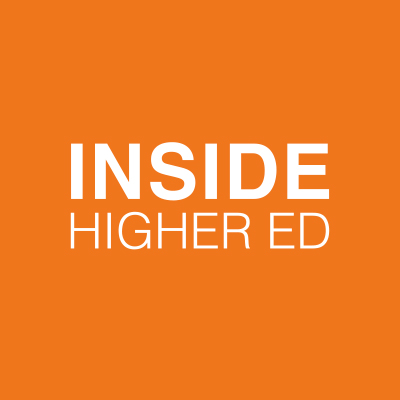
Higher Ed. Dive
June 07, 2022 Enrollment Management Trends
The median college received $13.2 million in government relief funding over the course of the pandemic, according to a report from S&P Global Ratings. While almost all colleges received public relief money, it was more important for those with low bond ratings — the colleges under the most financial pressure. That’s notable because the bulk of the funding is now ending, increasing colleges’ exposure to market stresses such as inflation and declining enrollment.

Higher Ed. Dive
May 17, 2022 Research, Student Success
College students and educators aren’t aligned with each other regarding how higher education should proceed once COVID-19 is no longer a public health emergency, according to new survey data covering 10 countries around the world. In North America, roughly one in four college leaders said their institutions don’t plan to offer remote or virtual class options by 2025, while 63% of students said they preferred fully online classes or classes that blend in-person and remote learning. Twenty-three percent said they prefer a mix of in-person and online courses.

Inside Higher Ed
May 09, 2022 Admissions, Enrollment Management Trends
Transfer student enrollment rates decreased by 6.9 percent over last year, and combined with the previous year, total transfer enrollment has declined by about 16 percent since the start of the pandemic. A decline in enrollment is a threat to upward mobility for student populations, though it does provide an opportunity for institutions to make a concerted effort to fix the transfer system.

Higher Ed. Dive
April 28, 2022 Enrollment Management Trends, Value and Affordability
About 9% fewer students completed FAFSA forms as of the end of March compared to the same point last year. This was driven by a decline in FAFSA renewals as the share of new FAFSA filers rose. Completions among already enrolled students fell by 12% from last year. The new data means colleges should expect fewer students to enroll for the 2022-23 academic year.

Inside Higher Ed
April 18, 2022 Student Success, Value and Affordability
A positive impact of the pandemic for many students has been access to post-secondary cost savings and financial aid, made possible through federal grants and institutional aid programs. Many institutions waived fees, temporarily eliminated charges for some services or forgave outstanding balances. It’s evident cost-saving measures for students, especially for first-generation, Indigenous and students of color need to continue.

Higher Ed. Dive
April 12, 2022 Admissions, Enrollment Management Trends
Students at the University of Missouri who did not submit admissions tests scores for fall 2021 earned slightly lower GPAs in the first semester compared to their peers who did. However, both groups had similar retention rates. Many test-optional and test-free policies remain in effect across institutions. More than 1,800 colleges and universities are not mandating exam score submission for fall 2022 applicants.

The Washington Post
April 08, 2022 Admissions, Enrollment Management Trends
Prominent U.S. institutions report a surge in international applications over the past two years. This is fueled by the easing pandemic travel restrictions, test-optional policies, and pent-up demand. The Common Application found a 34 percent increase in international student applications since 2020, vs. a 12 percent rate of growth for U.S. applicants.

The Chronicle of Higher Education
April 04, 2022 Admissions, Enrollment Management Trends
As colleges try to address declining enrollment rates, many are targeting students who left college without earning a degree. The majority of these students are adult learners and consequently have different needs than traditional college students. While the re-enrollment efforts are still in the early stages, one overarching theme is that these students need support, and institutions need to look for creative ways to provide it.

Higher Ed. Dive
April 04, 2022 Enrollment Management Trends, Value and Affordability
Free college’s momentum shifted from the federal level to state and local programs. Numerous initiatives covering tuition and other educational expenses have been proposed and enacted in recent months. There are about 350 state and local “promise programs”, compared with about 53 six years ago. Rutgers–New Brunswick recently launched the Scarlet Guarantee, a program to make tuition free for students with household incomes under $65,000 and decrease tuition costs for those with an income under $100,000.

The Chronicle of Higher Education
March 28, 2022 Pre-College Outreach, Value and Affordability
Last year, $3.75B in federal Pell Grants were left unclaimed by high school graduates who failed to complete a FAFSA. States are now requiring students to complete a FAFSA in order to graduate. It is imperative that students take advantage of unclaimed financial aid, especially as the COVID pandemic has impacted both college enrollment and FAFSA completion.